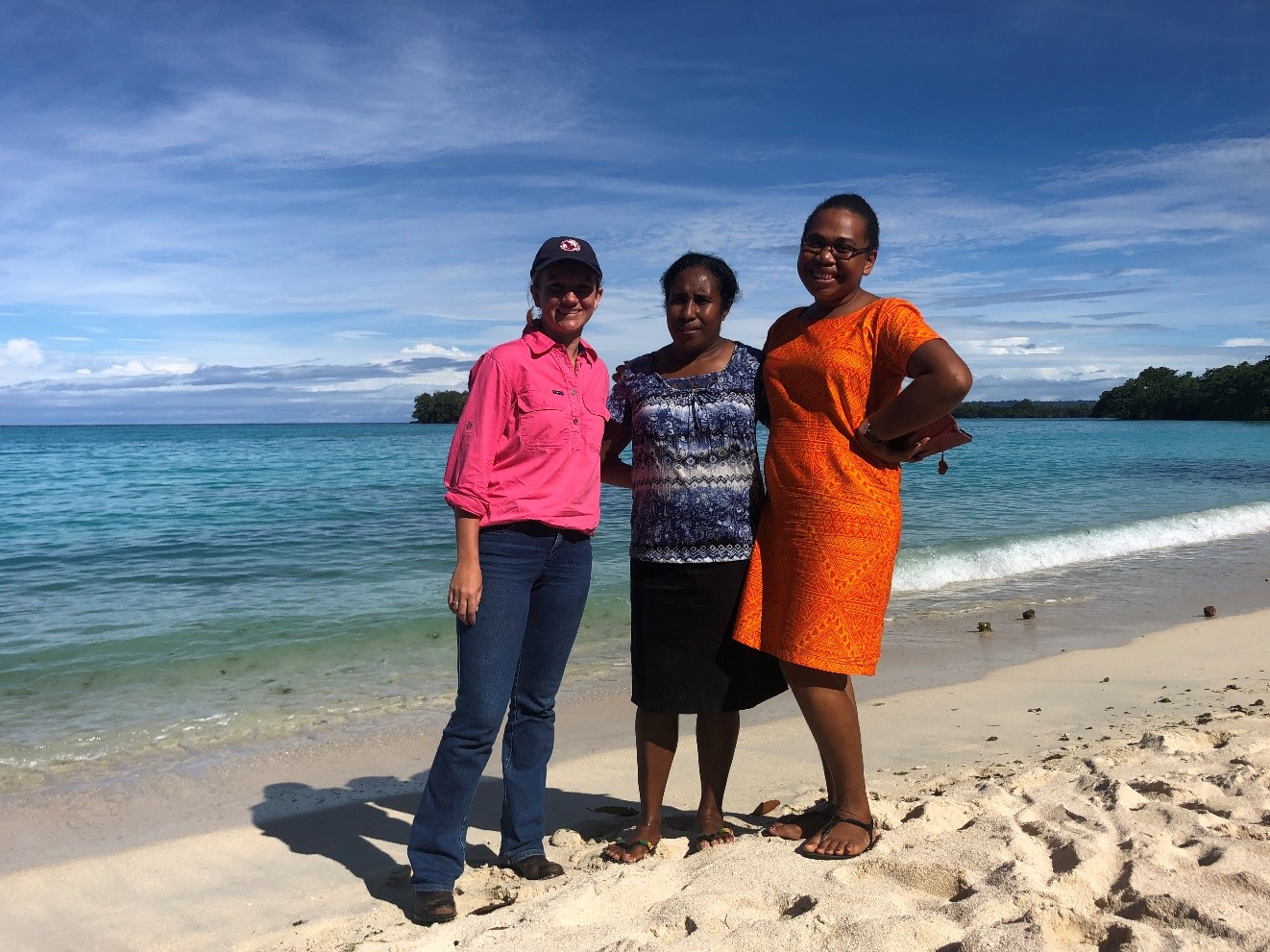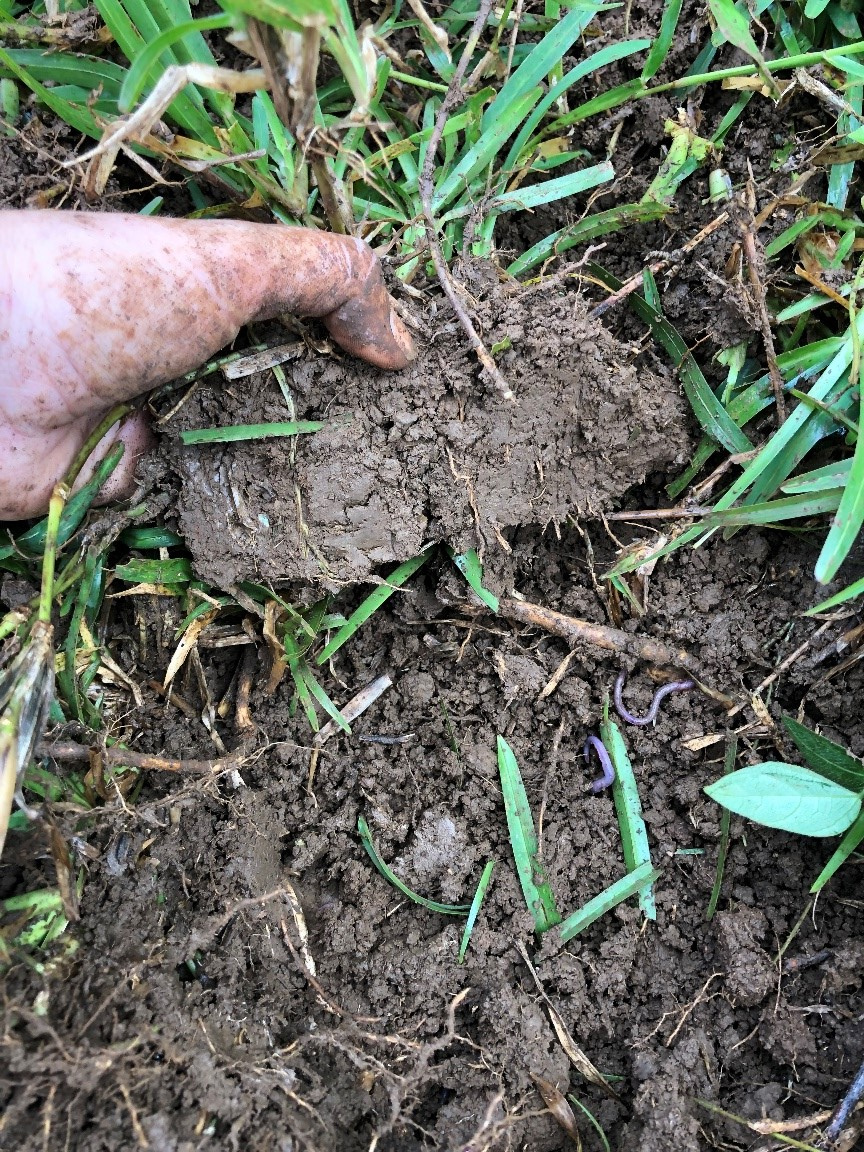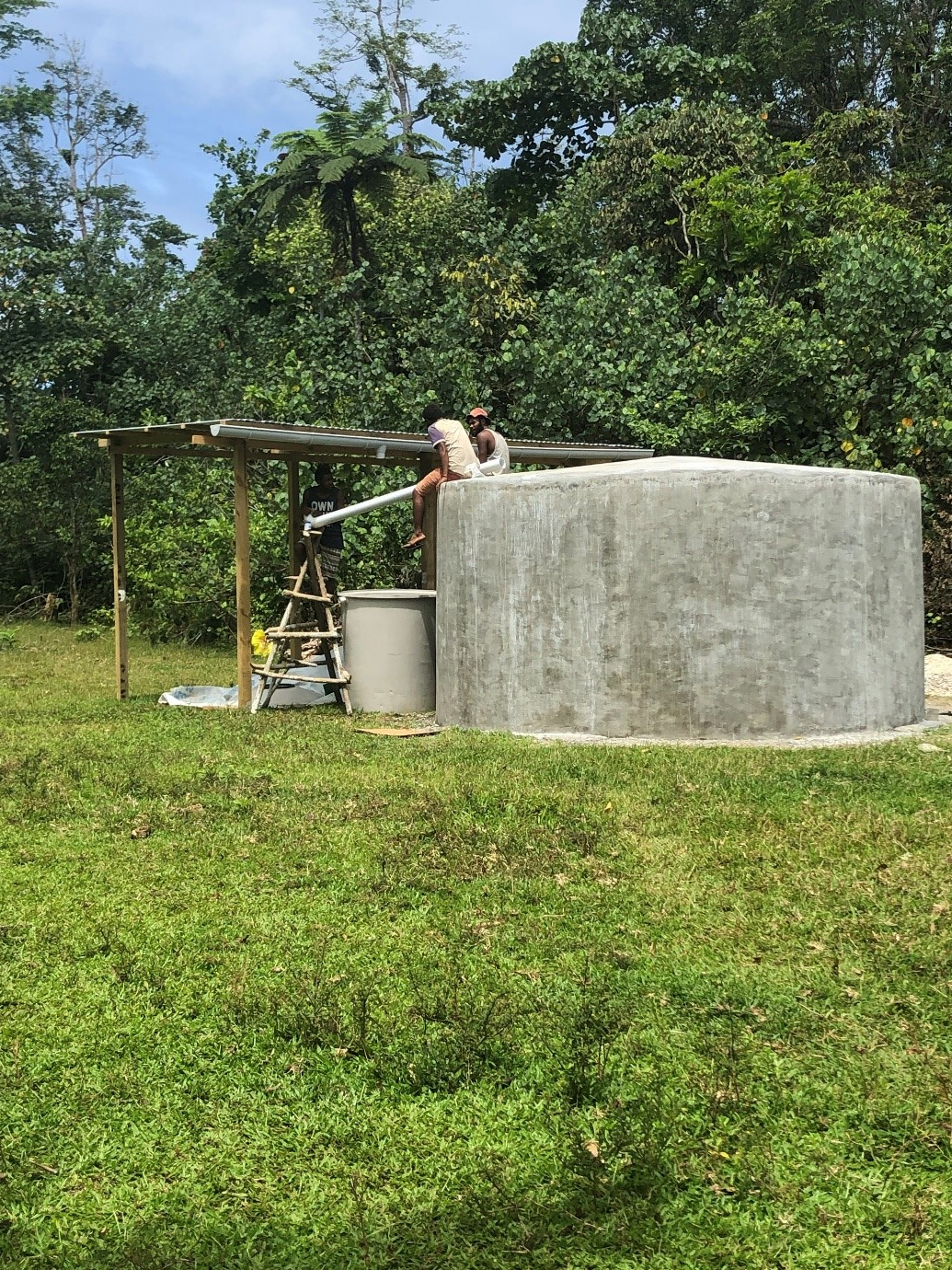Beef in paradise: a week in Vanuatu
By Peta Stockwell
Vanuatu: while most of us may know this Pacific Island nation as a popular cruise ship destination and a tropical paradise, my visit there in October allowed me to discover a lot more than beaches (which are beautiful by the way… and worth a trip in their own right!)
For a week I was fortunate enough to escape the lecture halls at University and spend some time with the Bisnis Blong Buluk project on Santo island, Vanuatu. Bisnis Blong Buluk is an ACIAR funded research project with a goal of sustainably increasing the productivity of smallholder beef farmers in Vanuatu by improving on-farm practices. Nearly 50% of rural households own cattle, so it is hoped that household incomes can be increased through improved production practices.

As a Northern Territory girl I would describe the weather as similar to Darwin on a good day; humid with rain in the afternoon, but with a sea breeze. Cattle commonly graze under coconut trees, which are harvested for coconut oil. The soils are rich with organic matter and soil microorganisms, and rainfall is plentiful. You can plant things and be pretty confident it will rain, and if you get thirsty while out in the field, you open a coconut. Now that’s good for us humans, but unfortunately cattle don’t have the luxury of opening up and sipping coconuts in the pastures.

Unlike cattle farms in Australia, little drinking water is available to smallholder cattle on Santo and the only water they consume is what is available from the plants they graze. Unfortunately, some years the rain is not quite as plentiful, and while the larger commercial farmers have water infrastructure in place, smallholders do not. This can have serious impacts on their small herds and livelihoods, where the loss of a few head can have devastating effects. As such, the research team is working to demonstrate the positive effects of drinking water for cattle and trialling different methods to conserve water on-farm. The enthusiasm and gratefulness of the farmer involved in the first demonstration and monitoring site was plain to see – next dry season she hopes to not have to transport water up to her farm, and to not lose any cows.

There has also been enthusiasm from farmers on the adoption of improved pasture species after successful demonstrations carried out by the research team. There is a definite scope for change, and the capacity building impacts are clear to see. The experience also reinforced to me the value of local knowledge within a team. No matter how much I knew about split-plots or the thermoneutral zones of livestock, it did not help me cut tree branches into field markers using local tools or work out where to stand to avoid being hit by a falling coconut. I also gained an appreciation of how challenging travelling just a few kilometres can be given the topography and frequent rainfall, particularly considering the main mode of transport for many is on foot, or maybe by horse. This exemplified to me how difficult it can be to appreciate the practical challenges involved on the ground simply by looking at a map or reading a report.
I thoroughly enjoyed my time in Vanuatu; the warmth of the people, and the warmth of the tropics. Though the relaxed attitude typical of the Pacific requires a little patience and practicality to get things done, there is a real capacity for change, and I took a great deal of satisfaction from the real-world approach to research.


